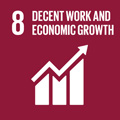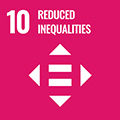- Docente: Guglielmo Barone
- Credits: 8
- SSD: SECS-P/01
- Language: Italian
- Moduli: Guglielmo Barone (Modulo 1) Alessandro Saia (Modulo 2)
- Teaching Mode: Traditional lectures (Modulo 1) Traditional lectures (Modulo 2)
- Campus: Forli
- Corso: Second cycle degree programme (LM) in International Relations and Diplomatic Affairs (cod. 9247)
Learning outcomes
The course is aimed at providing students that did not take International Economics in the First-cycle degree/Bachelor with some basic theoretical tools. In the part of the course devoted to international trade the focus is on what are the reasons explaining trade patterns among countries and what are the gains from trade. The most important instruments of trade policy are analyzed, the costs and benefits of protectionist trade policies are assessed, and the political economy of trade policies is discussed. Prior to the start of the course, a deep review of microeconomic theories of the consumer and the firm is strongly recommended. The course is entirely taught in Italian
Course contents
Introduction
The Ricardian model
The specific factors model
The Heckscher-Ohlin model
The general trade model
Trade policy
Political economy of international trade
Readings/Bibliography
"Economia internazionale 1: Teoria e politica del commercio internazionale" Paul R. Krugman, Maurice Obsfeld, e Marc Melitz. Editore: Pearson Education Italia
Lecture notes, papers: Virtuale online platform
Teaching methods
Frontal lectures and discussions in class
Assessment methods
Written exam; it is possible to have a supplementary oral exam on a team work. The grade is graduated as follows:
<18 failed
18-23 sufficient
24-27 good
28-30 very good
30 cum laude excellent
Teaching tools
Lectures slides and material made available in advance on the e-learning web platform.
Office hours
See the website of Guglielmo Barone
See the website of Alessandro Saia
SDGs



This teaching activity contributes to the achievement of the Sustainable Development Goals of the UN 2030 Agenda.
